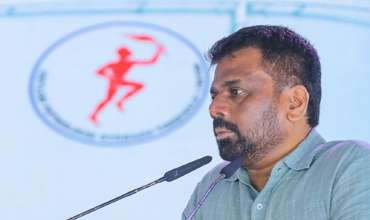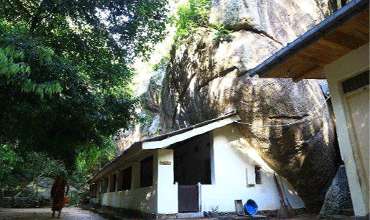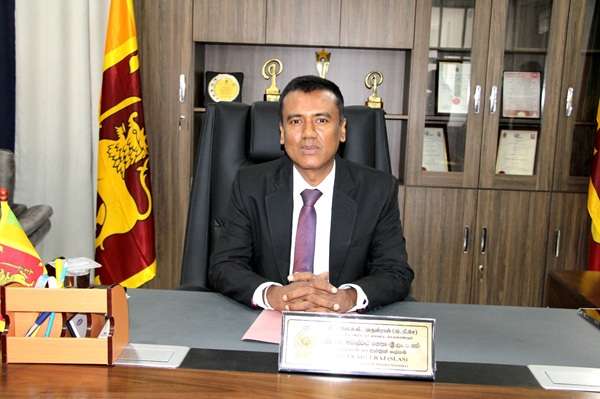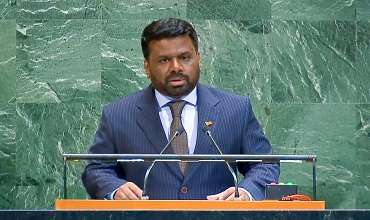- Last Update 2025-09-26 20:03:00
PUCSL says no need for scheduled power cuts for next three months
There will be no need to impose scheduled power cuts for the next three months under the new methodology adopted by Public Utilities Commission of Sri Lanka (PUCSL), its Chairman Janaka Ratnayake said.
Addressing a media briefing this evening, Mr Ratnayake stated that the PUCSL, as the power sector regulator, has directed the Ceylon Electricity Board (CEB) to undertake a series of measures to ensure uninterrupted electricity supply for the next three months.
Accordingly, hydropower generation will be reduced by 50% from tomorrow (16) while standby generators of private users will be incorporated to the national grid.
"Our analysis and data shows us we can manage our power situation without any scheduled power interruptions right throughout until we get into our next rainy season in May," the PUCSL Chairman said, adding their main obstacle is to curtail the consumption of hydropower which is depleting every day.
He asked the public to be mindful of the situation and make utmost efforts to conserve electricity.
The PUCSL has also noted that all apartments should not be using air conditioning facilities from 6.00pm to 9.00pm while all public institutions must refrain from using air conditioning facilities from 2.00pm to 4.30pm. Local government authorities and the Road Development Authority must also take steps to reduce the lighting of street lamps by 80%.
However, the methology works on the assumption that fuel needed for power plants will be made available and that power plants will not break down, Mr Ratnayake conceded. In the event that the national grid were to lose more than 200 MegaWatts (MW) of power, the need to impose power cuts will arise. In such an event, a power cut of about one hour would be imposed daily. The daily power cut will extend to 1 1/2 hours in the event more than 300MW are lost to the national grid and 2 hours if more than 400MW are lost.
Nevertheless, Mr Ratnayake claimed such situations can be avoided if the CEB strictly adhered to the directions given by the PUCSL and through conservation of electricity.
You can share this post!
-
Still No Comments Posted.
Name
Content

- September 20, 2025 - 218 - 0
Heavy damages caused to shops in Pettah due to fire
Several shops were damaged in a major fire that broke out in a shop on the third floor of a building at First Cross Street in Pettah, Colombo, today evening.

- September 17, 2025 - 207 - 0
President says CEB employees would have to make a choice in next two months
President Anura Kumara Dissanayake today warned that Ceylon Electricity Board Employees would have to make a choice in the next two months.

- September 25, 2025 - 173 - 0
Nine Buddhist monks killed in accident at Na Uyana Monastery
The number of Buddhist monks who were killed following the accident at the Na Uyana Theravada Buddhist Monastery (Na Uyana Aranya Senansenaya) in Pansiyagama, Melsiripura, Kurunegala currently stands at nine , with four injured, Minister of Buddhasasana, Religious and Cultural Affairs Prof. Hiniduma Sunil Senevi told Parliament this morning. He revealed that two of the injured Buddhist monks are being treated at the Intensive Care Unit (ICU

- September 23, 2025 - 149 - 0
Opposition renews forensic audit demand after e-visa verdict
The opposition has renewed its demand for a long delayed forensic audit into the controversial e-visa deal, following the sentencing of former Controller General of Immigration, Harsha Ilukpitiya, for contempt of court.

- September 20, 2025 - 137 - 0
Your Sunday Times highlights for this week
Read this week’s Sunday Times for your interesting articles
Related Articles

CEA payments through GovPay from today
- 26/09/2025 - 24 - 0

New District Secretary of Batticalao assumed duties today
- 26/09/2025 - 30 - 0

Top stories of the day
- 25/09/2025 - 73 - 0

President calls for urgent attention on inequality and poverty
- 25/09/2025 - 127 - 0





Leave Comments